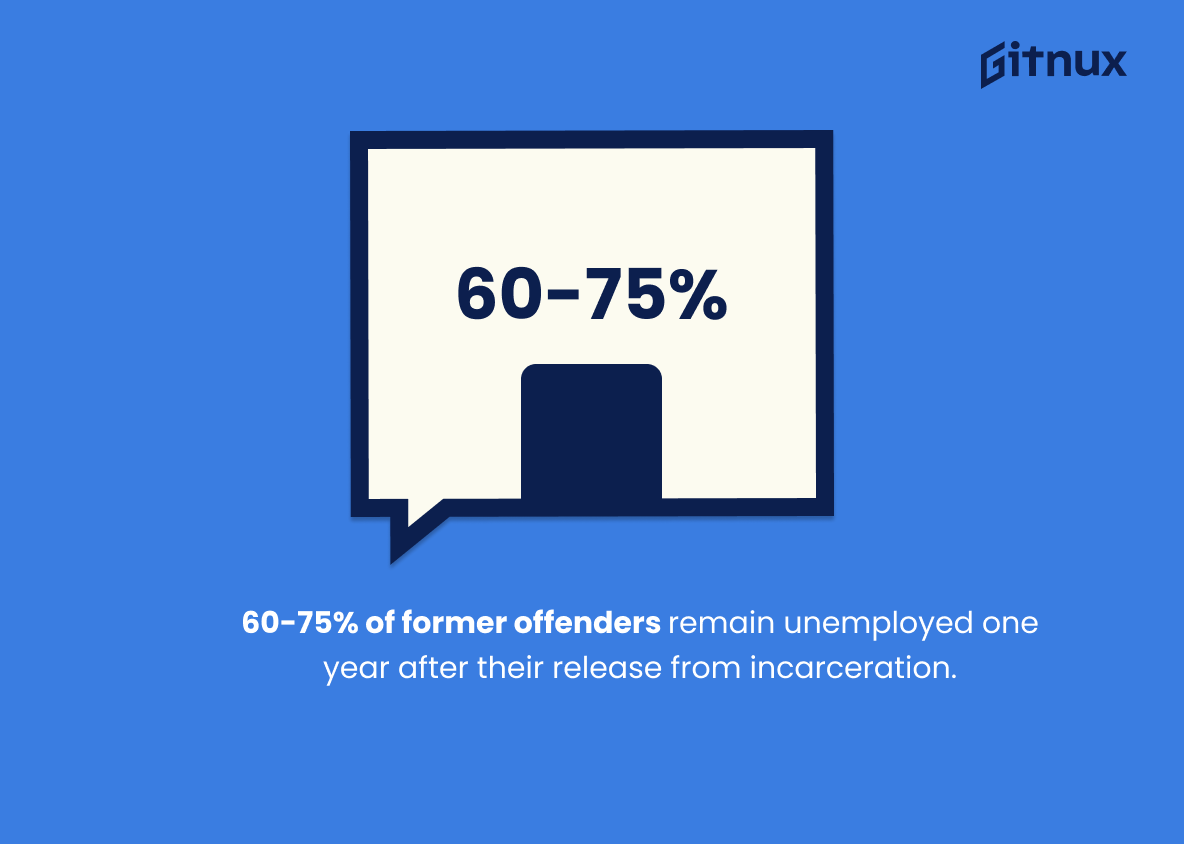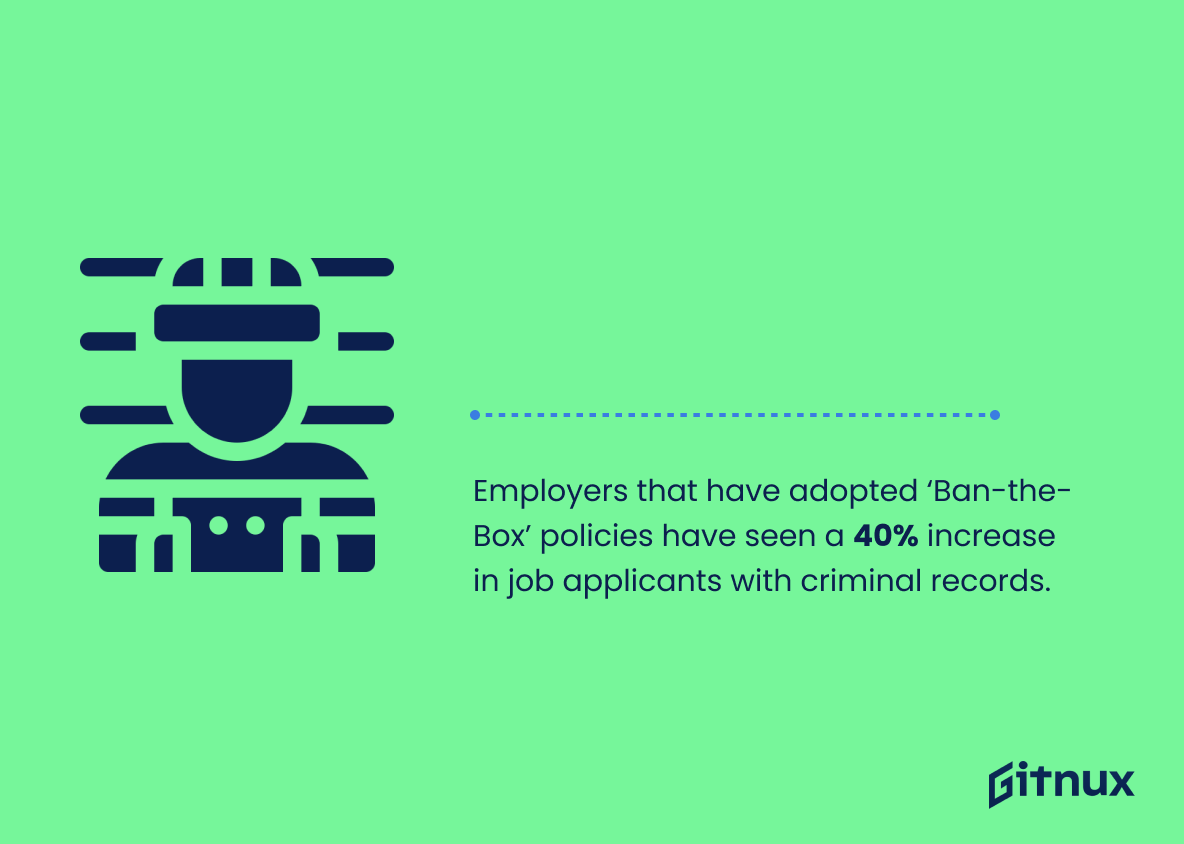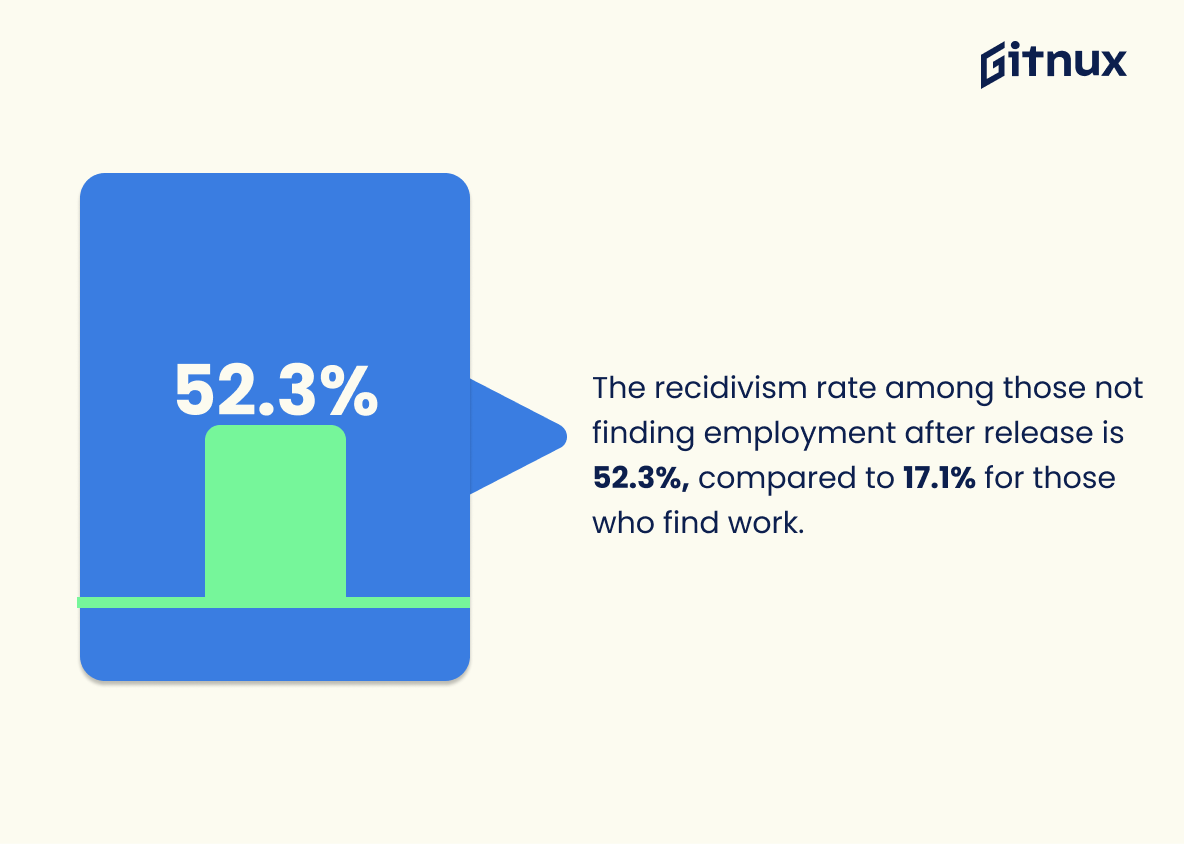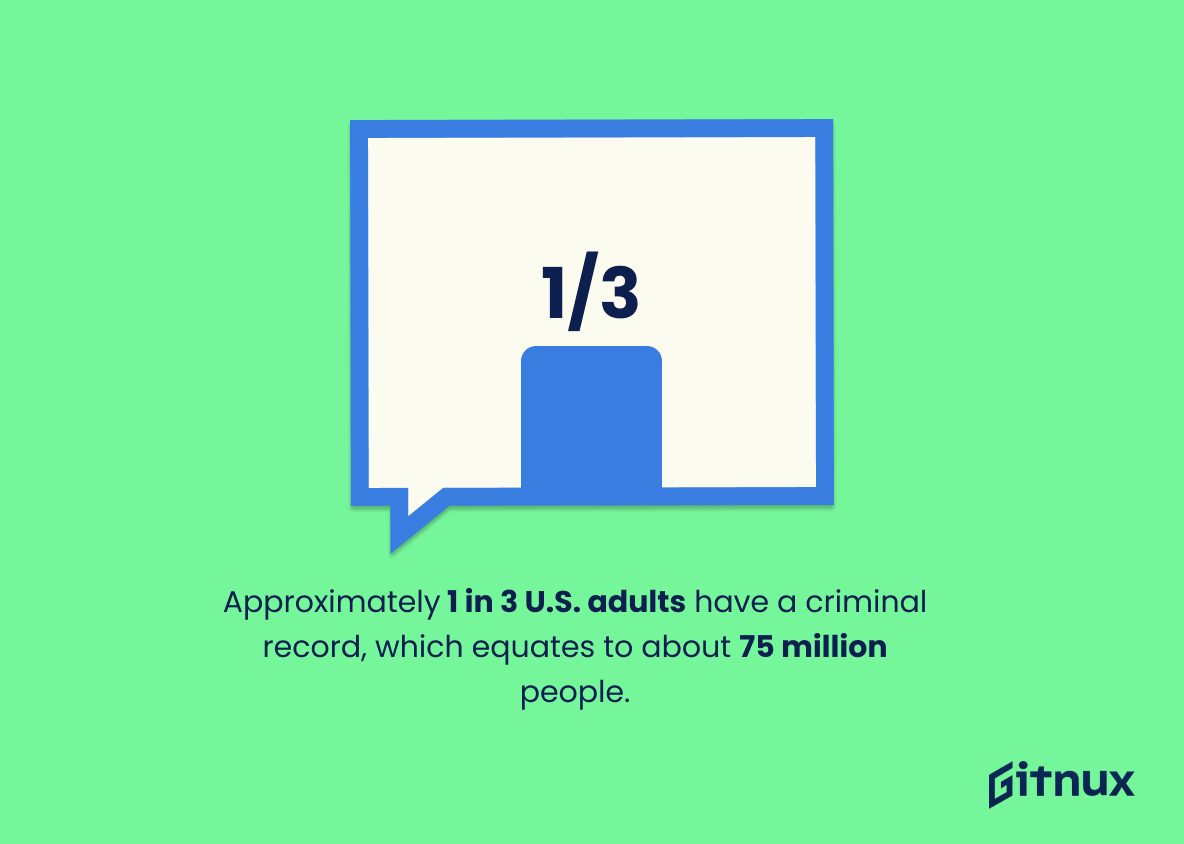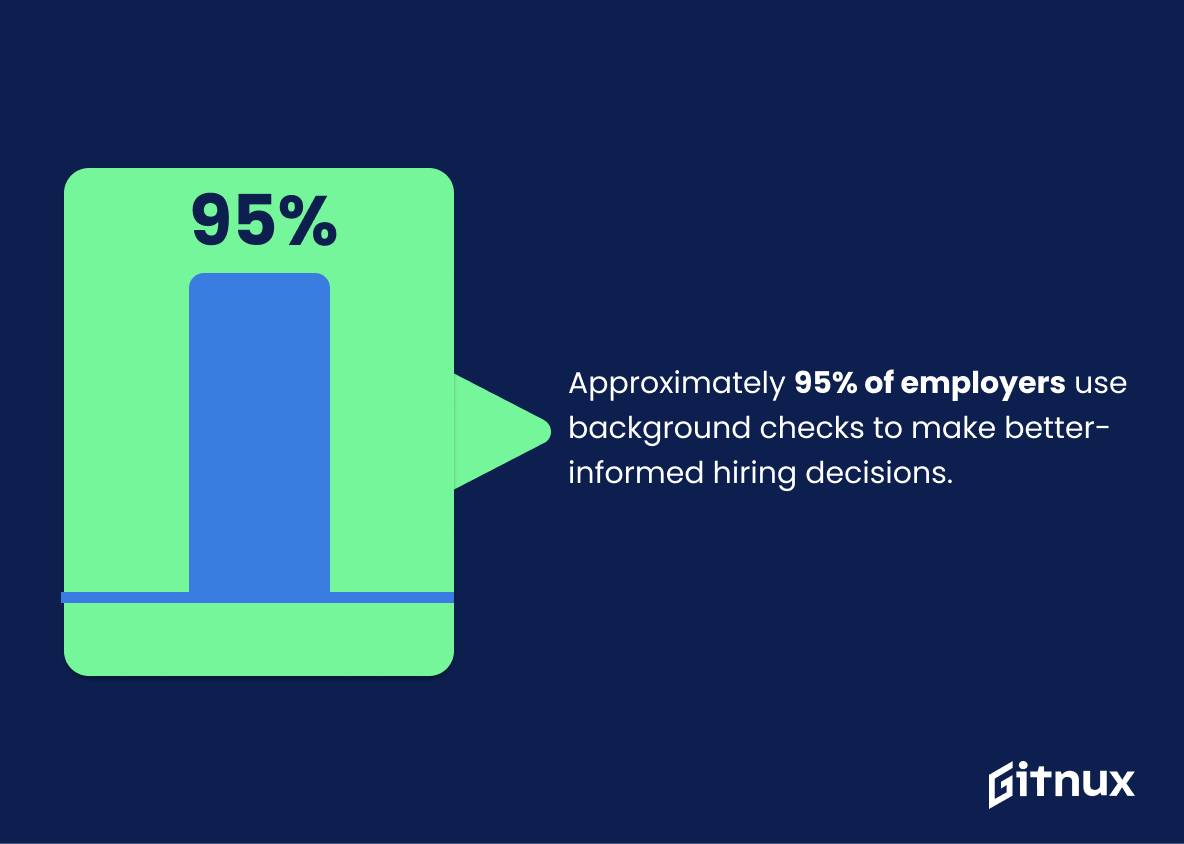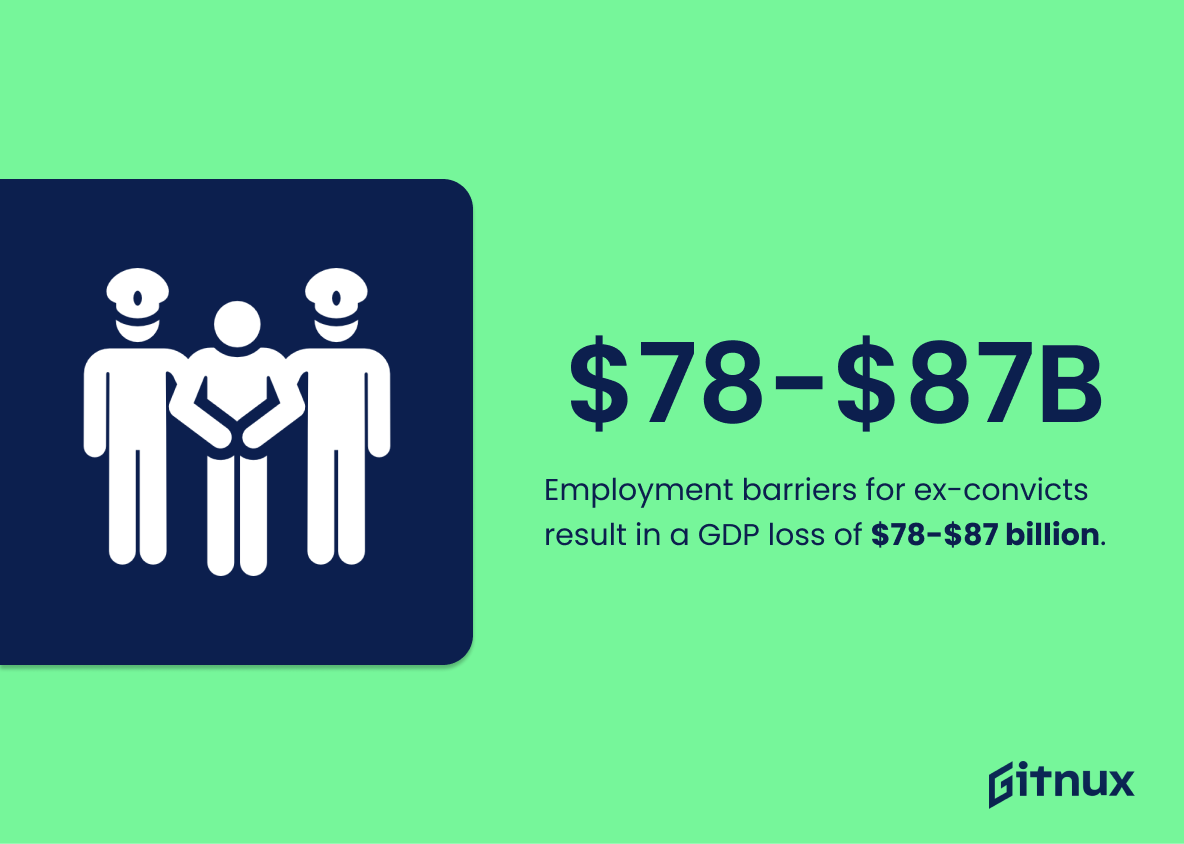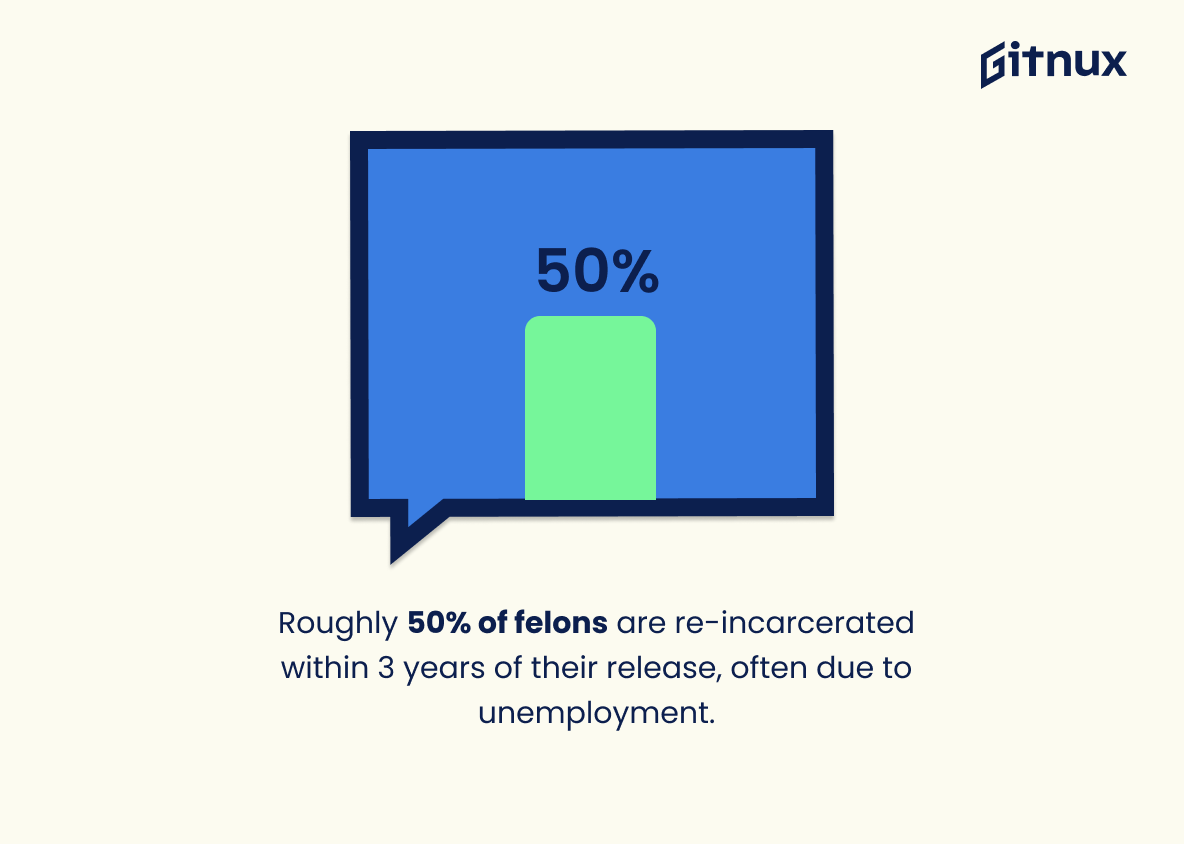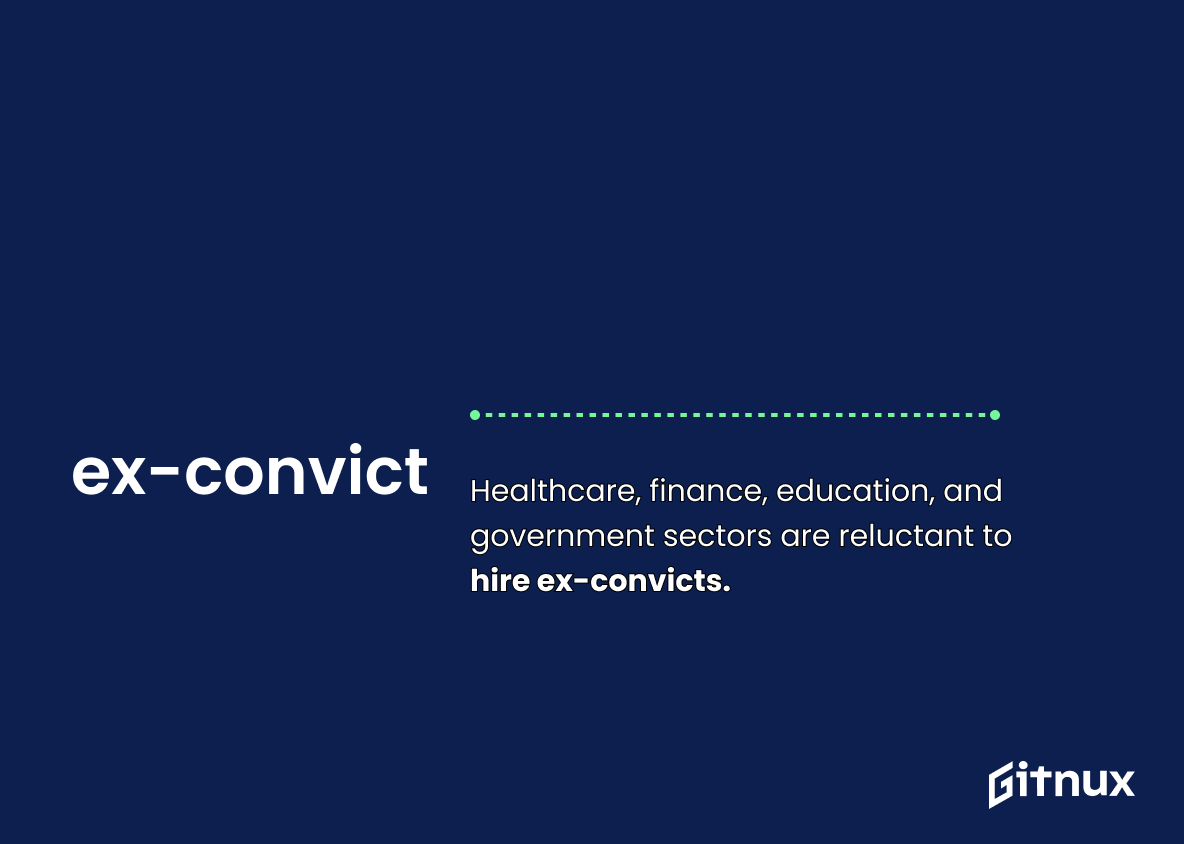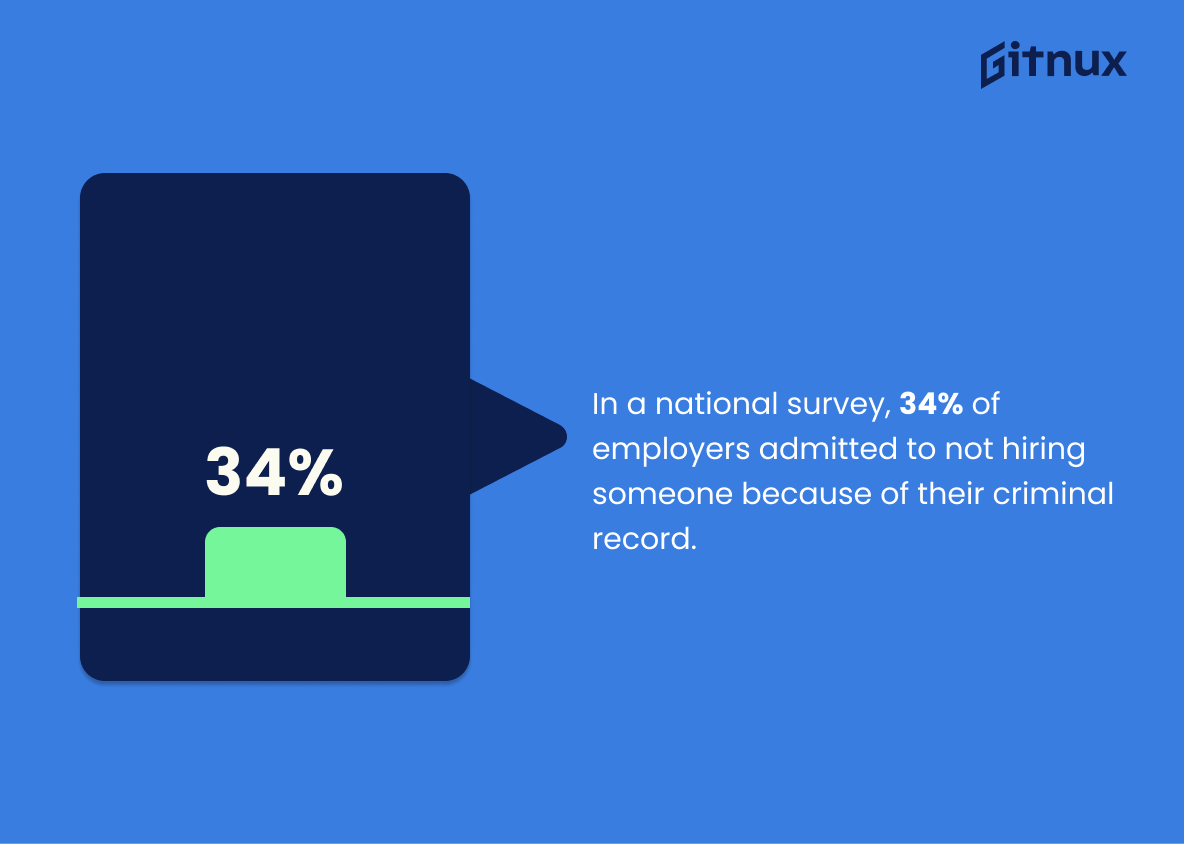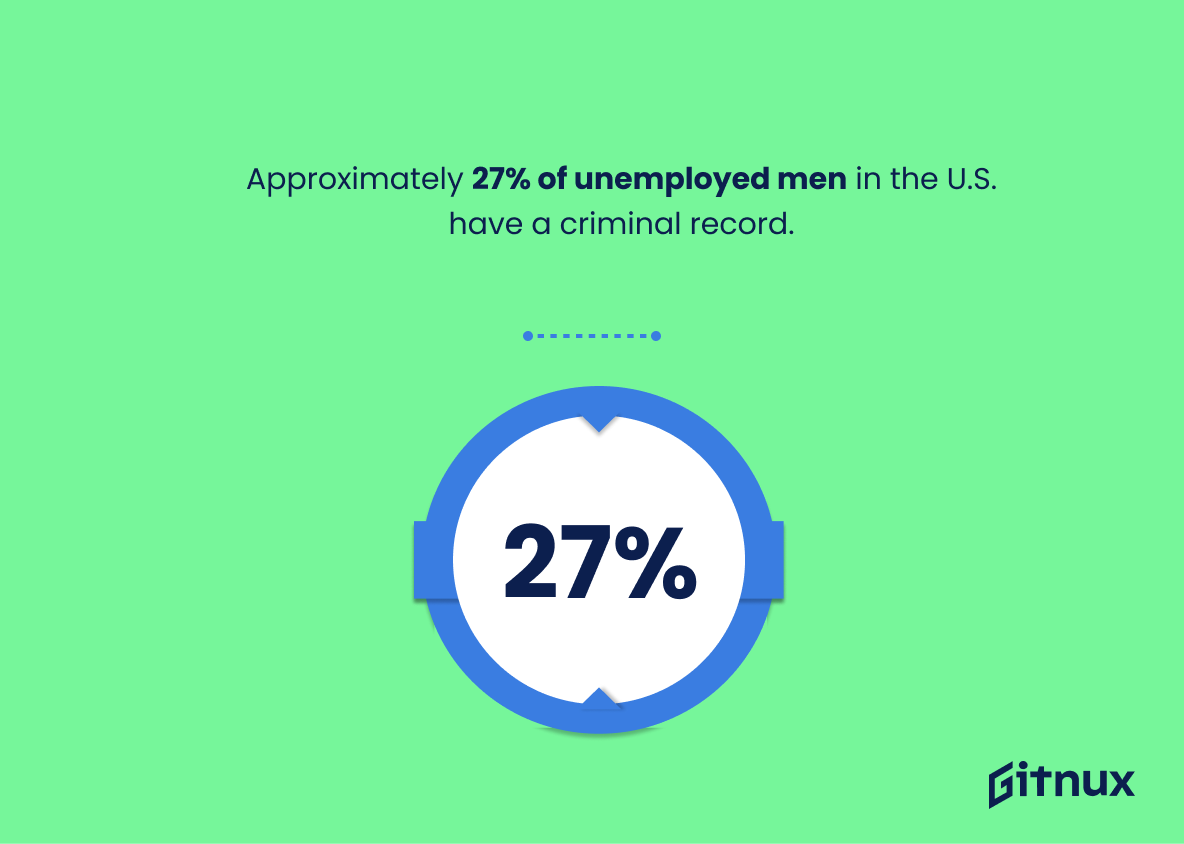The criminal justice system in the United States has a long history of disproportionately affecting people from marginalized communities. This is especially true when it comes to employment opportunities for those with criminal records, as employers often view them as untrustworthy or unreliable. Unfortunately, this means that millions of Americans are unable to find gainful employment due to their past mistakes and convictions.
This blog post will explore the current state of criminal record employment statistics in America today, including how many people have a criminal record, what percentage of employers conduct background checks on job applicants, which industries are least likely to hire individuals with a criminal record and more. We’ll also look at some potential solutions such as ‘Ban-the-Box’ policies that could help reduce barriers faced by those seeking work after being released from incarceration. Finally we’ll discuss the economic impact these restrictions can have on society overall if left unchecked.
This statistic is a stark reminder of the prevalence of criminal records in the United States, and the impact it has on the lives of millions of Americans. It highlights the need for employers to consider the potential of individuals with criminal records, and to create a more inclusive and equitable workplace. It also serves as a reminder of the importance of criminal justice reform, and the need to ensure that individuals with criminal records are given the opportunity to reintegrate into society.
92% of employers conduct criminal background checks on job applicants.
This statistic is a powerful indicator of the prevalence of criminal background checks in the hiring process. It demonstrates that employers are taking extra steps to ensure the safety of their workplace and the security of their employees. This statistic is especially relevant to a blog post about Criminal Record Employment Statistics, as it provides insight into the current state of the job market and the importance of having a clean criminal record when applying for a job.
Criminal Record Employment Statistics Overview
Only 12.5% of employers claim they do not accept job applicants with a criminal record.
This statistic is a powerful indicator of the changing attitudes towards hiring individuals with a criminal record. It shows that the majority of employers are now willing to consider applicants with a criminal record, which is a positive step towards reducing the stigma associated with having a criminal record. This statistic is an important part of the conversation about criminal record employment statistics, as it demonstrates that employers are increasingly open to giving individuals with a criminal record a chance to prove themselves in the workplace.
60-75% of former offenders remain unemployed one year after their release from incarceration.
This statistic is a stark reminder of the difficulties that former offenders face when attempting to reintegrate into society. It highlights the need for more resources and support to be made available to those who have been released from incarceration, in order to help them find meaningful employment and become productive members of society.
Employers that have adopted ‘Ban-the-Box’ policies have seen a 40% increase in job applicants with criminal records.
This statistic is a powerful indicator of the positive impact that ‘Ban-the-Box’ policies have had on the employment prospects of individuals with criminal records. It demonstrates that when employers remove the box asking about criminal history from job applications, they are more likely to receive applications from individuals with criminal records, thus providing them with a greater opportunity to gain employment. This statistic is an important reminder of the importance of creating a fair and equitable hiring process for all job seekers.
The recidivism rate among those not finding employment after release is 52.3%, compared to 17.1% for those who find work.
This statistic is a powerful indicator of the importance of employment in reducing recidivism. It clearly demonstrates that those who find work after release are far less likely to reoffend than those who do not. This highlights the need for employers to provide opportunities to those with criminal records, as it could have a significant impact on reducing crime.
People with criminal records are 50% less likely to receive a callback or job offer than those without records.
This statistic is a stark reminder of the reality that individuals with criminal records face when attempting to gain employment. It highlights the systemic discrimination that exists in the job market, and serves as a reminder of the need for reform in order to ensure that everyone has an equal chance of success.
33% of non-violent, non-sexual felony convictions in California resulted in employment loss or reduction in wages.
This statistic is a stark reminder of the real-world consequences of non-violent, non-sexual felony convictions in California. It highlights the fact that, even when individuals have committed a crime that does not involve violence or sexual misconduct, they can still face significant economic hardship as a result of their conviction. This statistic is a powerful illustration of the long-term impact of criminal records on employment opportunities and wages.
Approximately 1 in 3 U.S. adults have a criminal record, which equates to about 75 million people.
This statistic is a stark reminder of the prevalence of criminal records in the United States, and the potential impact it can have on employment opportunities. With such a large portion of the population having a criminal record, it is essential to understand the implications of this statistic in order to ensure that those with criminal records are not unfairly discriminated against in the job market.
African-American men with a criminal record are 60% less likely to receive a callback or job offer.
This statistic is a stark reminder of the systemic racism that African-American men with a criminal record face when seeking employment. It highlights the fact that, despite their qualifications, they are still being discriminated against due to their criminal record. This statistic is a powerful illustration of the need for employers to be more open-minded and to recognize the potential of all job applicants, regardless of their criminal record.
Approximately 95% of employers use background checks to make better-informed hiring decisions.
This statistic is a powerful indicator of the prevalence of background checks in the hiring process. It demonstrates that employers are increasingly relying on background checks to make informed decisions about potential employees, highlighting the importance of understanding criminal record employment statistics.
19 states have enacted ‘Ban-the-Box’ legislation, prohibiting employers from asking about criminal records during the initial stages of job applications.
This statistic is significant in the context of Criminal Record Employment Statistics because it demonstrates the growing trend of states taking action to reduce the barriers to employment for individuals with criminal records. By prohibiting employers from asking about criminal records during the initial stages of job applications, ‘Ban-the-Box’ legislation helps to ensure that individuals with criminal records are given a fair chance to compete for jobs.
The economic impact of employment barriers faced by those with a criminal record is estimated at a loss of $78-$87 billion in GDP.
This statistic is a stark reminder of the immense economic cost of employment barriers faced by those with a criminal record. It highlights the fact that the exclusion of this population from the workforce is not only detrimental to their individual prospects, but also to the overall economic health of the nation. This staggering figure of $78-$87 billion in lost GDP serves as a powerful reminder of the need to address the issue of criminal record employment discrimination.
Roughly 50% of felons are re-incarcerated within 3 years of their release, often due to unemployment.
This statistic is a stark reminder of the challenges that felons face when attempting to reintegrate into society after their release. It highlights the importance of providing felons with the resources they need to find employment, as a lack of employment opportunities can lead to a higher rate of recidivism. This statistic is a call to action for employers to consider the potential of felons and to provide them with the opportunity to gain meaningful employment.
Employers in healthcare, finance, education, and government sectors are least likely to hire applicants with a criminal record.
This statistic is a crucial insight into the current state of employment for those with a criminal record. It highlights the fact that certain sectors are more likely to reject applicants with a criminal record, which can have a significant impact on their ability to find employment. This statistic is especially important in the context of a blog post about criminal record employment statistics, as it provides a clear indication of the challenges faced by those with a criminal record when it comes to finding employment.
In a national survey, 34% of employers admitted to not hiring someone because of their criminal record.
This statistic is a stark reminder of the reality that many individuals with criminal records face when attempting to gain employment. It highlights the fact that employers are still hesitant to hire individuals with criminal records, despite the fact that many of these individuals have paid their debt to society and are looking for a second chance. This statistic is an important part of the conversation surrounding criminal record employment statistics, as it serves to illustrate the challenges that individuals with criminal records face when attempting to gain employment.
Approximately 27% of unemployed men in the U.S. have a criminal record.
This statistic is a stark reminder of the reality that many unemployed men in the U.S. face when it comes to finding employment due to their criminal record. It highlights the need for employers to be aware of the potential barriers that individuals with criminal records may face when seeking employment, and the importance of providing them with the necessary resources and support to help them find meaningful employment.
29 states and more than 150 cities and counties have adopted ‘Ban-the-Box’ policies for public sector employers.
This statistic is a testament to the growing recognition of the importance of giving individuals with criminal records a fair chance at employment. The fact that so many states and cities have adopted ‘Ban-the-Box’ policies shows that there is a growing awareness of the need to reduce the stigma associated with having a criminal record and to provide individuals with the opportunity to demonstrate their qualifications for a job without being immediately disqualified due to their past.
38% of employers consider the nature and frequency of the offense while assessing a candidate’s criminal history.
This statistic is significant because it highlights the importance of employers taking into account the severity and frequency of a candidate’s criminal history when making hiring decisions. It emphasizes that employers should not simply reject a candidate based on their criminal record, but rather consider the context of the offense and how long ago it occurred. This is important because it allows employers to make more informed decisions and ensure that they are not unfairly discriminating against individuals with criminal records.
In a recent study, employers were more likely to call back applicants with a criminal record when they received additional information about the offense.
This statistic is significant in the context of criminal record employment statistics because it demonstrates that employers are willing to consider applicants with a criminal record if they are provided with more information about the offense. This suggests that employers are open to giving individuals with a criminal record a second chance, and that providing additional information about the offense can be beneficial in the hiring process.
Conclusion
The statistics presented in this blog post demonstrate the significant impact that criminal records have on employment opportunities. Despite efforts to reduce barriers for those with a criminal record, such as ‘Ban-the-Box’ policies, employers remain hesitant to hire individuals with a history of convictions. This is especially true for certain industries and positions where trustworthiness is essential. The data also shows that African Americans are disproportionately affected by these restrictions due to their higher rate of incarceration compared to other racial groups. Ultimately, it appears that more needs to be done in order for people with criminal records to gain meaningful access into the workforce and break out of cycles of poverty or recidivism caused by unemployment.
References
0. – https://www.www.brookings.edu
1. – https://www.www.pewtrusts.org
2. – https://www.www.peopletrail.com
3. – https://www.www.hireimage.com
4. – https://www.www.nonprofitrisk.org
5. – https://www.www.preemploymentdirectory.com
6. – https://www.www.lewistontribune.com
7. – https://www.www.nelp.org
8. – https://www.communityboost.org
9. – https://www.nelp.org
10. – https://www.www.rand.org
11. – https://www.www.aeaweb.org
12. – https://www.www.sentencingproject.org
13. – https://www.www.marketwatch.com
14. – https://www.www.prisonpolicy.org
15. – https://www.www.businessnewsdaily.com

